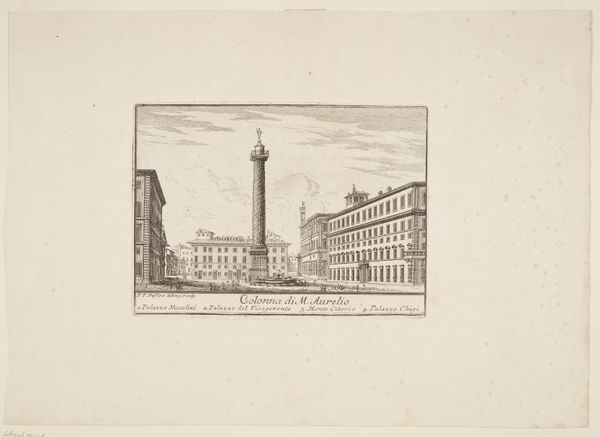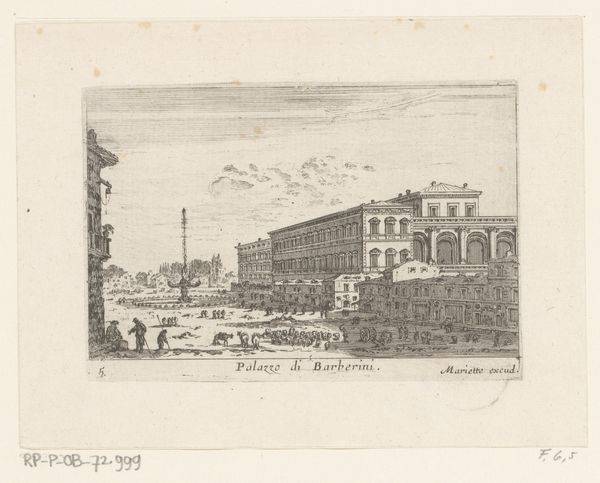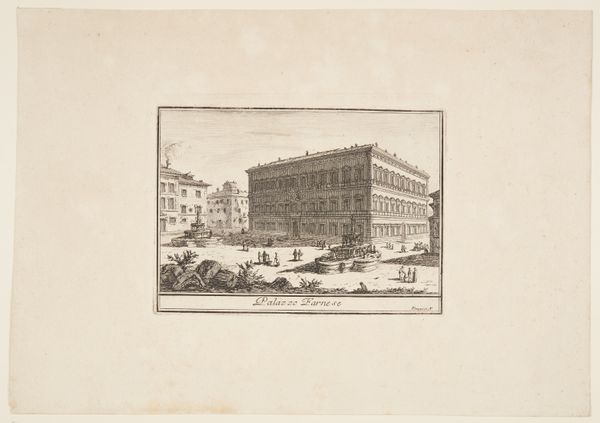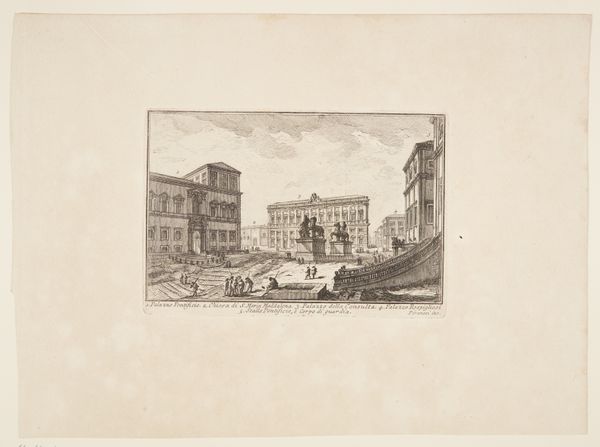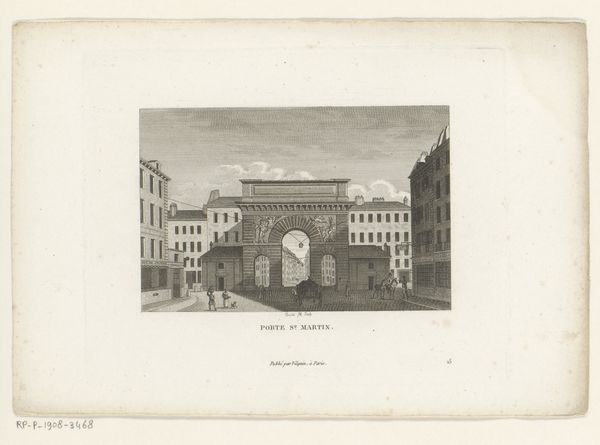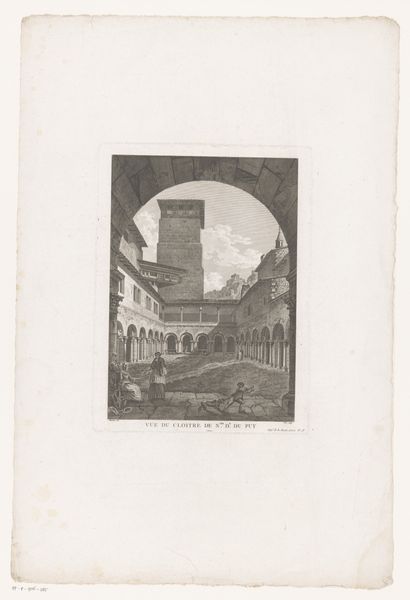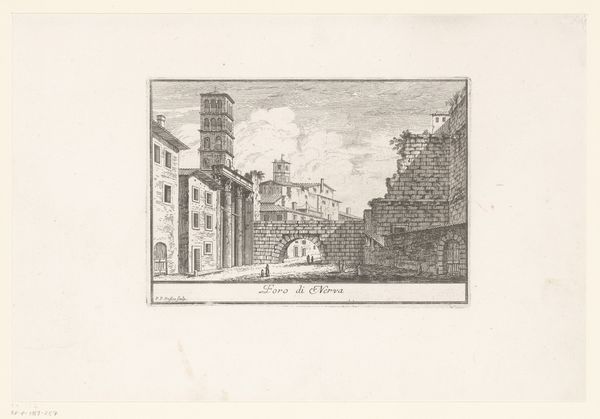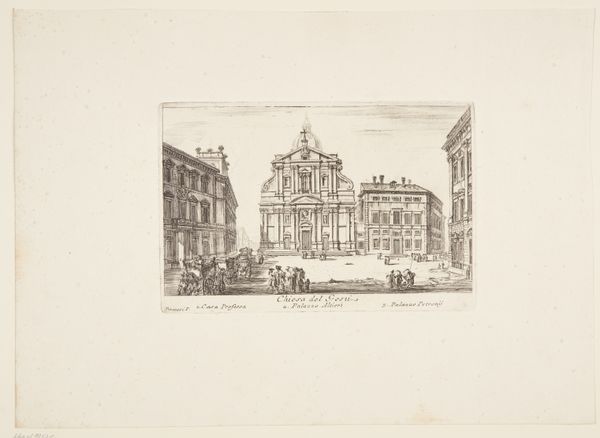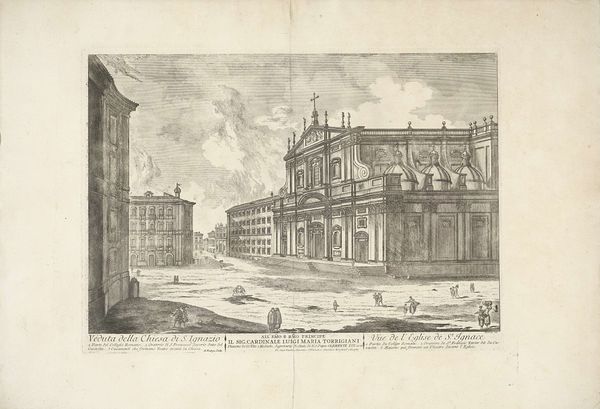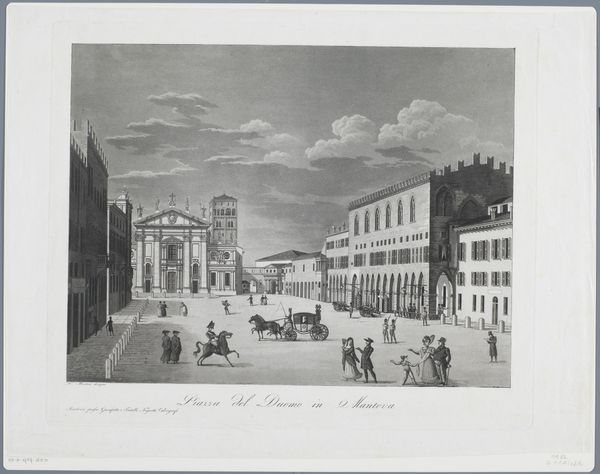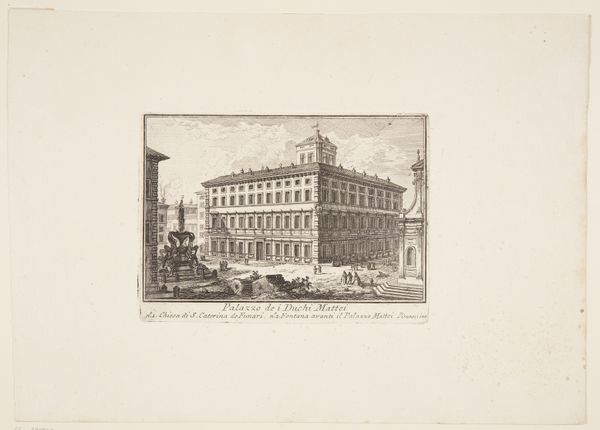
print, engraving
# print
#
romanticism
#
cityscape
#
engraving
#
realism
Dimensions: 215 mm (height) x 252 mm (width) (bladmaal)
Curator: Let's take a look at this engraving titled "Nikolai Taarn" from 1831. It’s held here at the SMK, and was created by Søren Henrik Petersen. Editor: Oh, it feels so quiet and still. There’s a serene sort of loneliness about it, don’t you think? That tall, looming tower... I can almost hear its echoes. Curator: The work provides a study in contrasts: the architectural forms rendered through meticulously precise engraving versus the soft Romantic atmosphere that pervades the composition. One really feels the skill involved when they consider the intense labor involved. Editor: Absolutely. I find myself drawn to those little stalls or booths at the base of the tower—almost makeshift. It makes me think of how transient life is beneath this monumental, presumably enduring structure. You know? What human activity and the market stalls took place near the Nikolai tower when this image was rendered in 1831? Curator: That's precisely the charm, I feel: the way it uses realist visual language in service of a cityscape, the details are secondary to how Petersen has chosen to convey space and monumentality, how society’s transactions unfold in the very shadow of these old institutions. This really places the artwork into Romanticism beyond just simple Realism! The materials chosen and its method, how they have captured this ephemeral moment. Editor: And the light! It's filtered and gentle, contributing to the overall tranquility. But there's also a looming shadow on the left which suggests a subtle sense of impermanence. Or is that simply how our mortal eyes react to an older-styled medium from almost two centuries ago? Curator: No doubt both are equally accurate here! Given the historical and cultural landscape, Romanticism was fascinated by themes of ruin and nostalgia—it does create a delicate but captivating tension. Editor: Mmm. Looking at it now, I see that tension playing out on multiple levels. Thanks for pointing that out. Curator: It's precisely the material traces and the way production interlocks with cultural attitudes that provide these artworks with enduring depth and resonance. Editor: Yes, exactly. It does invite you into a long-ago world but also makes you ponder your own place in a society obsessed with the concept of place and setting. Very poignant.
Comments
No comments
Be the first to comment and join the conversation on the ultimate creative platform.
